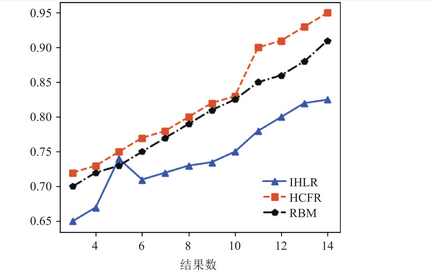基于卫星地图的植被图像分割算法研究与Matlab实现【附代码】
实验结果表明,该系统在处理纯植被区域和含植被区域图片时,均能实现较高的分割准确率,与商业软件相比,结果相近。此外,系统还成功计算出了植被区域的实际面积,为城市绿化率统计和生态评估提供了可靠的数据基础。然后,通过统计分割出的植被区域像素数量,结合比例尺信息,计算出植被区域的实际面积。例如,可以引入深度学习模型,通过训练大量标注数据,自动学习植被的特征表示,实现更精细的植被分类和分割。此外,系统还可以

✅ 博主简介:擅长数据搜集与处理、建模仿真、程序设计、仿真代码、论文写作与指导,毕业论文、期刊论文经验交流。
✅ 具体问题可以私信或扫描文章底部二维码。
(1)系统设计与实现
基于卫星地图图片的城市植被分割系统的设计与实现,主要围绕图像处理技术的应用展开。系统采用MATLAB作为开发平台,结合K-means算法和色彩分割算法,实现对城市区域卫星地图图片中植被区域的自动分割。K-means算法通过迭代优化,将图像像素点聚类为若干类别,其中植被区域由于其独特的颜色特征,能够被有效地分离出来。色彩分割算法则进一步利用植被在RGB色彩空间中的分布特性,通过设定阈值范围,精确提取出植被区域。这两种算法的结合,不仅提高了分割的准确性,还增强了系统对不同光照和季节变化的适应性。
在植被区域被初步分割后,系统引入了基于熵的纹理分割算法,对植被区域进行细化分类。该算法通过计算图像局部区域的熵值,区分出树木和草地等不同类型的植被。树木由于其复杂的纹理结构,通常具有较高的熵值,而草地则相对均匀,熵值较低。通过这种纹理分析,系统能够更细致地反映城市植被的分布情况,为后续的生态分析和规划提供更为精确的数据支持。
(2)植被区域面积计算
为了准确计算植被区域的面积,系统设计了一套基于图像比例尺的面积计算方法。首先,系统从卫星地图图片中提取比例尺信息,确定图像中每个像素对应的实际地面距离。然后,通过统计分割出的植被区域像素数量,结合比例尺信息,计算出植被区域的实际面积。这一过程不仅考虑了图像的几何校正,还通过多次采样和平均,减少了计算误差,确保了面积计算的准确性。
实验部分,系统针对不同类型的城市区域图片进行了分割和面积计算实验。实验结果表明,该系统在处理纯植被区域和含植被区域图片时,均能实现较高的分割准确率,与商业软件相比,结果相近。特别是在处理复杂城市环境下的植被分割时,系统展现出了良好的鲁棒性和适应性。此外,系统还成功计算出了植被区域的实际面积,为城市绿化率统计和生态评估提供了可靠的数据基础。
(3)系统应用与展望
基于卫星地图图片的城市植被分割系统,不仅为科研人员提供了一种快速、准确的植被信息获取工具,也为普通民众了解城市生态环境提供了便利。系统的应用范围广泛,可以用于城市绿化规划、生态环境监测、灾害评估等多个领域。例如,在城市绿化规划中,系统可以帮助规划者快速识别出植被覆盖率低的区域,从而制定针对性的绿化措施。在生态环境监测中,系统可以定期对城市植被进行分割和面积计算,跟踪植被变化趋势,评估生态恢复效果。
未来,系统还可以进一步集成更多的图像处理算法和机器学习技术,提高分割的精度和效率。例如,可以引入深度学习模型,通过训练大量标注数据,自动学习植被的特征表示,实现更精细的植被分类和分割。此外,系统还可以与地理信息系统(GIS)相结合,实现植被信息的空间分析和可视化展示,为城市管理和决策提供更为全面的支持。
% MATLAB code for Urban Vegetation Segmentation System
% This code demonstrates the core functionality of the system
% Load satellite map image
img = imread('city_map.jpg');
% Convert image to LAB color space for better color segmentation
lab_img = rgb2lab(img);
% Apply K-means clustering to segment vegetation
num_clusters = 3; % Number of clusters for vegetation, non-vegetation, and others
[cluster_idx, cluster_center] = kmeans(double(lab_img(:,:,2:3)), num_clusters, 'Distance', 'sqEuclidean', 'Replicates', 3);
% Reshape the cluster index to image dimensions
pixel_labels = reshape(cluster_idx, size(img,1), size(img,2));
% Identify vegetation cluster based on color characteristics
vegetation_cluster = find_cluster_with_green(cluster_center);
% Create mask for vegetation
vegetation_mask = pixel_labels == vegetation_cluster;
% Refine vegetation mask using color segmentation
green_threshold = 0.1; % Threshold for green color in LAB space
vegetation_mask = vegetation_mask & (lab_img(:,:,2) > green_threshold);
% Apply texture segmentation using entropy filtering
entropy_filter = entropyfilt(rgb2gray(img));
texture_threshold = 4.5; % Threshold for texture segmentation
texture_mask = entropy_filter > texture_threshold;
% Combine color and texture masks for final vegetation segmentation
final_vegetation_mask = vegetation_mask & texture_mask;
% Calculate vegetation area using image scale
scale = extract_scale_from_image(img); % Function to extract scale from image
pixel_area = scale^2; % Area represented by one pixel
vegetation_area = sum(final_vegetation_mask(:)) * pixel_area;
% Display results
figure;
subplot(2,2,1); imshow(img); title('Original Image');
subplot(2,2,2); imshow(vegetation_mask); title('Vegetation Mask');
subplot(2,2,3); imshow(texture_mask); title('Texture Mask');
subplot(2,2,4); imshow(final_vegetation_mask); title('Final Vegetation Segmentation');
fprintf('Total Vegetation Area: %.2f square meters\n', vegetation_area);
% Helper function to identify vegetation cluster
function vegetation_cluster = find_cluster_with_green(cluster_center)
% Find the cluster with the highest green component
[~, vegetation_cluster] = max(cluster_center(:,2));
end
% Helper function to extract scale from image (dummy implementation)
function scale = extract_scale_from_image(img)
% In a real implementation, this would analyze the scale bar in the image
scale = 0.5; % Assuming 1 pixel = 0.5 meters
end


GitCode 天启AI是一款由 GitCode 团队打造的智能助手,基于先进的LLM(大语言模型)与多智能体 Agent 技术构建,致力于为用户提供高效、智能、多模态的创作与开发支持。它不仅支持自然语言对话,还具备处理文件、生成 PPT、撰写分析报告、开发 Web 应用等多项能力,真正做到“一句话,让 Al帮你完成复杂任务”。
更多推荐
 已为社区贡献39条内容
已为社区贡献39条内容









所有评论(0)